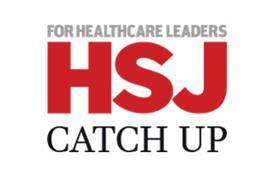How healthcare organisations can deliver the business of today while preparing for a more sustainable future.
The NHS net zero target may feel like one challenge too many, but it is an unprecedented challenge and unequivocal that human activity is causing climate change. We must act.
Sponsored by
In June 2019, the UK committed to being the first major economy to end its contribution to global warming, by bringing greenhouse gas emissions to net zero by 2050. This includes a reduction in GHGs for the public sector, of which the NHS is responsible for 40 per cent.
Through the Health and Care Act 2022, the NHS aims to become the world’s first net zero national health system by 2040 for emissions it controls directly and by 2045 for emissions it can influence. To enable this, the standard NHS contract includes the condition that NHS providers maintain and deliver a Green Plan.
Listening to providers at the recent HSJ Sustainability Forum, co-sponsored by EY, NHS leaders want to know: Whilst the NHS recovers from covid-19, drives down elective waiting lists, restores community services and accelerates digitisation: how do you reduce emissions and deliver green plans at the same time?
Through our support for organisations and our own journey to net zero, we have identified three steps providers can undertake to accelerate the path towards net zero:
1. Do you have what you need to get started?
- Establish a CO2e baseline by using information that you have access to already, such as activity data, energy usage, estates plans and procurement spend, to construct a picture of your emissions. You can apply factors to translate activity into CO2e levels using datasets publicly available from Greener NHS and the Department for Business, Energy and Industrial Strategy.
- Calculate your trajectory based on the areas of focus set by Greener NHS. Create a forecast using the variety of publicly available calculators, or access tailored support which includes the EY and Mott MacDonald Net Zero Estates Tool — a rapid assessment for large estates which can calculate your net zero trajectory and readiness to meet targets.
2. With so many other demands, can you fit this in?
- Achieve ‘best bang for buck’ — based on the calculations above, you will be able to identify where your biggest impacts can be achieved and align these to your organisational and system priorities. Sustainable initiatives can also translate into better patient and staff experience, better use of resources, cost improvement, improving outcomes and reduced emissions. For example, the National Institute for Health and Care Excellence has calculated how, through medicines optimisation and therefore reducing length of stay in hospital, you can reduce emissions, wastage and save costs. The Nitrous Oxide project in Scotland has identified that investigating wastage from pipe manifold systems can significantly reduce both the impact on the environment and costs. We have helped organisations to look for sustainability in unexpected places, and often it’s right in front of you!
- Leverage your supply chain — map your current supply chains to identify opportunities for carbon reduction. Over 1.4 per cent of supply chain emissions are due to single-use devices which could otherwise be reused. Standard public sector contracts have a social value requirement, and suppliers can be asked to estimate the impact of their service on your emissions. Greener NHS has already set in place a supplier roadmap to enable this.
3. Is there any help?
- It’s around you. Sustainability is everyone’s business and must be embedded and championed ‘ward to board’. Providers should empower staff to identify and pursue their own sustainability initiatives. Healthcare staff around the world and across the UK are already taking the initiative. Create multiple networks within and beyond your organisation to collaborate and share across the integrated care system and on the Future NHS Collaboration Platform to have maximum impact.
- Dedicated funding is available, through initiatives such as the Public Sector Decarbonisation Scheme, which we have successfully supported clients to access. Carbon savings are also quantifiable benefits in Green Book business cases, so how can you link existing funding requests to those initiatives you want to achieve?
Sustainability is fast becoming the new normal. There are so many fantastic initiatives and solutions out there, within and beyond the NHS. To begin with, look around you and investigate what your organisation is already doing, starting with your own team! You will recognise that being sustainable is about being resilient, managing resources, and providing better healthcare and a better working world for your staff. Then, you might find that it is easy to be green.
EY is committed
EY achieved carbon neutrality in 2020 and became carbon negative in October 2021, and we believe we have a responsibility to go even further, faster, to reach net zero in 2025.
EY supports the acceleration of public sector transition to a sustainable future and transforming healthcare through the power of people, technology and innovation. We have developed a suite of methods designed to help organisations to decarbonise and to transform in a sustainable way. Contact our team below to find out how best we can support you.
EY UK Health Sciences and Wellness
Teekai Beach, Senior Manager, Business Consulting: tbeach@uk.ey.com
Caroline Beardall, Partner, People Advisory Services: caroline.beardall@uk.ey.com
Ellie Wilkes, Director, Business Consulting: ewilkes@uk.ey.com



























No comments yet